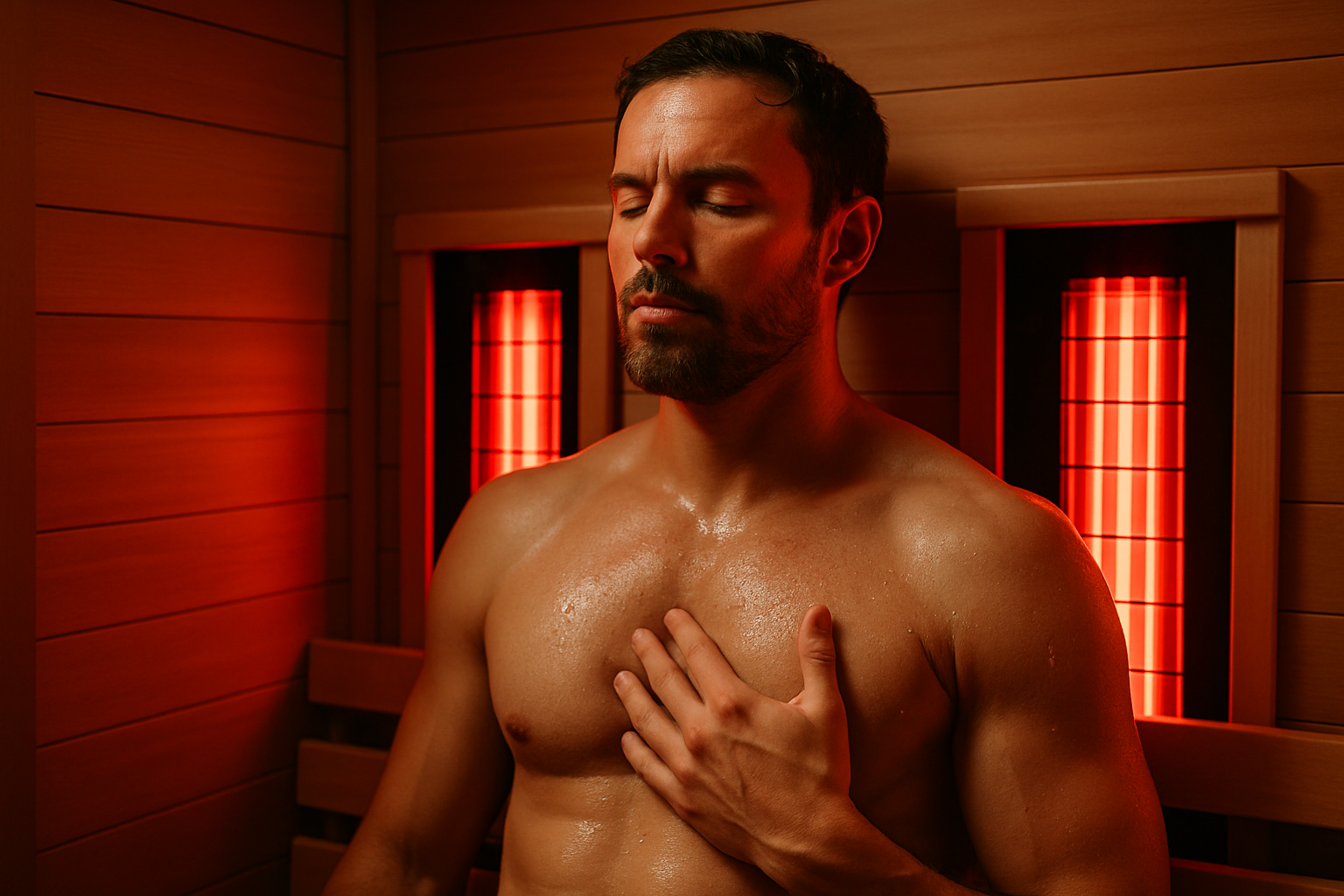Understanding House Saunas and How They Work
House saunas have been part of daily life in many cultures for centuries, offering a warm place to relax and enjoy quiet time. This article explains how saunas are built, the different styles used at home, and the simple process that makes the room warm. It also explores the traditions that shaped saunas, how they became common in modern homes, and what makes each type unique. By the end, readers will understand how saunas function and why they continue to be a popular part of home design today.

House saunas have evolved from their Nordic origins into versatile wellness additions for modern homes. These personal heat therapy spaces provide convenient access to the numerous health and relaxation benefits traditionally found in public facilities. From traditional wood-burning models to contemporary infrared options, home saunas come in various configurations to suit different spaces, preferences, and wellness goals. This comprehensive guide explores everything you need to know about bringing the sauna experience into your home environment.
Types of Home Saunas and Their Distinctive Features
Home saunas generally fall into several categories, each offering unique advantages. Traditional Finnish saunas use wood-burning or electric stoves with rocks that create steam when water is poured over them, typically reaching temperatures of 70-100°C (160-212°F) with low humidity. Infrared saunas, increasingly popular for home installations, use infrared heaters to emit radiant heat that directly warms the body rather than the air, operating at lower temperatures (40-60°C/104-140°F) while providing similar therapeutic effects. Steam saunas (sometimes called Turkish baths) generate humid heat at lower temperatures, usually around 40-50°C (104-122°F) with nearly 100% humidity.
Other variations include barrel saunas, which feature distinctive curved walls that maximize heat efficiency and space utilization, and portable saunas that offer flexibility for those with limited space or who rent their homes. Each type requires different installation considerations, maintenance needs, and delivers slightly different physiological effects and experiences.
How Saunas Work: The Science Behind the Heat
Regardless of type, all saunas operate on the principle of controlled heat exposure to induce physiological responses in the body. In traditional saunas, a heating element (wood-burning or electric) warms stones that radiate heat throughout the enclosed space. When water is added to these hot stones, it creates steam (löyly in Finnish tradition), increasing humidity and intensifying the perceived heat through improved heat transfer to the skin.
Infrared saunas work differently, using electromagnetic radiation to heat the body directly without significantly warming the surrounding air. These infrared waves penetrate skin tissue to a depth of approximately 1.5 inches, creating a heating effect from within the body rather than from the outside air. This allows users to experience intense sweating at lower ambient temperatures, which some find more comfortable to breathe in and tolerate for longer sessions.
The body’s response to sauna heat includes increased core temperature, dilated blood vessels, accelerated heart rate (similar to moderate exercise), and profuse sweating—all contributing to the therapeutic effects users seek.
House Sauna Benefits for Health and Wellbeing
Regular sauna use has been associated with numerous health benefits. Research suggests that consistent sauna sessions may help reduce the risk of cardiovascular events, improve vascular function, and lower blood pressure. The heat exposure triggers a mild stress response that may strengthen cellular resilience through a process called hormesis.
Saunas also support respiratory health, potentially providing relief for those with asthma or chronic bronchitis when used appropriately. The deep sweating induced during sessions helps eliminate toxins through the skin, although the extent of detoxification remains a subject of ongoing research. Many users report improved sleep quality following evening sauna sessions, likely due to the body’s natural cooling process afterward.
Mental health benefits are equally significant. The quiet, contemplative environment combined with physical relaxation creates an ideal setting for stress reduction. Regular users often describe a meditative quality to their sauna experience, with the ritual becoming an important self-care practice. The release of endorphins during heat exposure contributes to improved mood and a sense of wellbeing that extends beyond the session itself.
Home Sauna Design and Placement Considerations
Successful home sauna design begins with thoughtful placement. Indoor installations typically require dedicated space in basements, converted closets, bathrooms, or purpose-built additions. Outdoor installations offer more flexibility but need proper foundations, insulation, and weather protection. Both require proximity to electrical connections and, for wet saunas, plumbing access.
Sauna size should accommodate intended users comfortably—typically allowing at least 2 feet of bench space per person. Ceiling height considerations are important too, with the ideal height being around 7 feet to allow proper heat stratification. Material selection focuses on heat-resistant, low-toxicity woods like cedar, hemlock, or aspen that won’t release resin when heated and provide pleasant aromatics. Proper ventilation design is crucial for safety, comfort, and energy efficiency, typically incorporating both intake and exhaust vents to create gentle air circulation without excessive heat loss.
Aesthetic elements like lighting (heat-resistant fixtures), glass doors or windows, and ergonomic bench designs can enhance the experience significantly. Many homeowners integrate relaxation areas adjacent to their saunas to create a complete wellness zone within their homes.
Sauna Installation Guide: From Planning to First Session
Installing a home sauna begins with thorough planning and preparation. For pre-fabricated kits (the most common home solution), ensure your selected location has adequate electrical capacity, proper flooring with drainage for wet saunas, and sufficient ventilation possibilities. Most manufacturers provide detailed specifications for space requirements and utility needs.
The installation process typically involves assembling the insulated walls, ceiling, and benches according to the manufacturer’s instructions. Electrical work—including heater installation, lighting, and controls—should be performed by qualified electricians familiar with sauna-specific requirements. Ventilation systems must be properly installed to ensure safety and comfort. For custom builds, working with experienced sauna builders or contractors familiar with the unique requirements of these spaces is highly recommended.
After installation, proper testing and break-in procedures are essential before full use. This usually involves a preliminary heating cycle to remove any manufacturing residues from components, followed by temperature calibration and safety checks. First-time users should start with shorter sessions at moderate temperatures to acclimate to the experience.
Cost Considerations for Home Sauna Ownership
The cost of installing a home sauna varies widely based on type, size, quality, and whether you choose pre-fabricated kits or custom construction. Entry-level portable infrared saunas start around £500-£1,000, while pre-fabricated kits for 2-4 person traditional or infrared saunas typically range from £2,000 to £7,000. Custom-built saunas with premium materials and features can exceed £15,000, particularly for outdoor installations requiring additional site preparation.
| Sauna Type | Average Cost Range (GBP) | Installation Complexity | Operating Cost |
|---|---|---|---|
| Portable Infrared | £500-£1,500 | Low (plug-and-play) | £10-20/month |
| Pre-fab Infrared | £2,000-£5,000 | Moderate | £15-30/month |
| Pre-fab Traditional Electric | £3,000-£7,000 | Moderate to High | £30-50/month |
| Custom Indoor Traditional | £5,000-£15,000+ | High | £30-60/month |
| Custom Outdoor Barrel | £4,000-£10,000 | Moderate to High | £25-45/month |
| Custom Outdoor Cabin | £8,000-£20,000+ | High | £30-60/month |
Prices, rates, or cost estimates mentioned in this article are based on the latest available information but may change over time. Independent research is advised before making financial decisions.
Beyond initial purchase and installation, ongoing costs include energy consumption (typically £15-60 per month depending on usage frequency, type, and local energy rates), maintenance, and occasional parts replacement. Traditional saunas generally cost more to operate than infrared models due to higher energy requirements for heating. Wood-burning saunas have different ongoing costs, trading electricity expenses for fuel.
Maintenance requirements vary by type but generally include periodic wood treatment for benches and walls, heater element inspection, and cleaning. Most quality saunas have long lifespans, with many lasting 15-20+ years with proper care, making them a long-term wellness investment for many homeowners.
Home saunas represent a significant but potentially valuable addition to residential properties. Beyond the immediate wellness benefits, they can enhance property value and create a distinctive feature that sets a home apart in the real estate market. For many enthusiasts, the combination of convenience, privacy, and health benefits justifies the investment in bringing this ancient wellness practice into the modern home.




